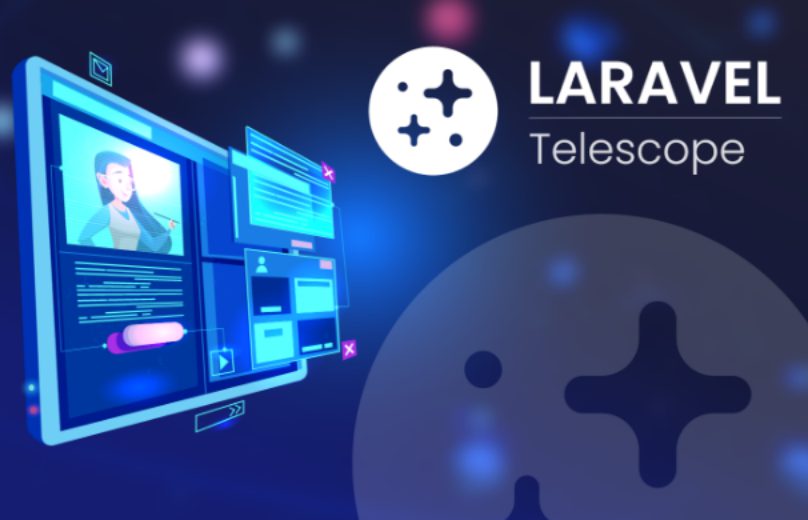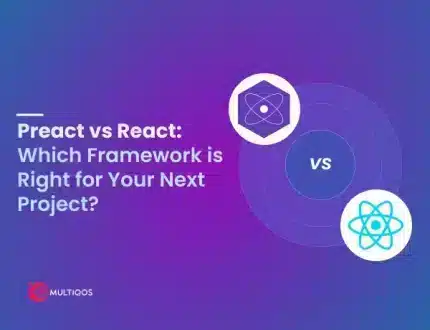Getting Started with Laravel Telescope in the App Development Process

If you work with PHP open, you would instantly recognize the name of Laravel. One of the critical highlights of Laravel is its free and open-sourced nature. With Laravel, you can make common web development assignments simpler and quicker. It also helps you to refrain from deploying platforms that involve expensive ongoing licensing costs.
However, one of the key highlights of Laravel is the Laravel Telescope. When designing and building web applications; it is usually impossible to avoid errors. From an undefined function to a typo, even the most experienced web designers and developers commit certain types of mistakes.
Also, it is normal for you to have an idea of everything which takes place in your application. And when you have access to this information, you can drastically reduce mistakes and avoid the occurrence of bugs. With Laravel Telescope, you would have access to this feature. For those who don’t know, the Laravel Telescope is a great debugging feature that makes development a breeze.
What’s more, impressive is the fact that you would have access to specific platforms, which helps you to recognize and debug several facets of your application. Moreover, Laravel Telescope also provides you access to a large number of information which makes it easy for you to develop apps without any serious glitches.
A Laravel web development company would benefit immensely from the Laravel Telescope as they would spend less time debugging the websites. So as you can see, the web development company would be able to facilitate quicker resolutions in situations where something requires thorough investigation. So with these things in mind, let’s take a glance at the various aspects of working with the Laravel Telescope.
The Significance of Laravel Telescope in the App Development Process
One of the key highlights of the Laravel Telescope is that the developer avails actionable insights. For instance, as a developer, you would benefit from great insights on your application, log entries, database queries, etc.
With the Laravel Telescope, you would also be able to observe how the different components of your app collaborate. And when the context is about websites, you can find out which pages are working correctly, and the pages where debugging is almost a necessity.
How Developers Debugged Laravel Apps Earlier?
Well, the Laravel Telescope was introduced recently. But before that, PHP developers debugged their Laravel-based applications with various tools. Let’s take a look at some of these tools so that you can implement Laravel Telescope more efficiently.
Laravel Debugbar
Customary to its name, this tool adds a small bar at the bottom of the browser with the necessary information about debugging. Quite impressively, before the launch of the Laravel Telescope, it was used by a prominent web development company in india. With the help of this tool, the developers would have access to codes that are not performing in an appropriate manner.
Clockwork
Prior to Laravel Telescope, Clockwork provides an insight into the PHP application routine. The tool also includes application logs, queries on the database, cache usage, etc. This debugging tool would also provide laravel developers with an extension on Chrome or Firefox. It also has a server-side component that collects data quickly.
Log Viewer of Laravel
With the help of this debugging tool, you would visualize the logs from the storage files. You would quickly get the records for easy debugging.
So now that you know about these tools, let’s take a look at the working mechanism of the Laravel Telescope.
The Working Mechanism of Laravel Telescope
If you are a leading web design and development company, you should be aware of the working mechanism of the Laravel Telescope. From debugging requests to the run commands, you would be able to achieve a lot of tasks with the Laravel Telescope. So now that you know a bit about Laravel Telescope, here are some other things to know about setting it up.
Installation
To be precise, the Laravel Telescope was introduced in the latest version of Laravel. Note that it also requires a minimum of Laravel 5.7.7 to function. So once you have updated your Laravel framework, you can install the Telescope with the help of the composer.
What’s more impressive is the fact that you can also specify whether or not you want the Laravel Telescope to work in the developmental environment. Laravel also comes with two migrations for you. When you execute the migration, the tool would automatically reset the operations. Here are some of the features which you should be aware of.
Features
After you have installed and set up Laravel Telescope, you would be automatically directed to the dashboard. You would have tabs on the left side of the listing pages, which would illustrate various types of features.
Requests
It is one of the feature pages from where you would have access to various types of HTTP requests. Note that these HTTP requests usually come into your application. It also implements the request.
You would also avail additional information on each request by clicking on the eye icon. With each request, you would also be able to view associated data from other parameters. It would be best if you even remembered that the extra information is not limited to the queries.
Schedule
As a Laravel Development Company, you should be aware of the schedule of this tool. Laravel provides you with the scheduler, which permits you to define a wide variety of data. With the help of the schedule page, you can have access to various commands for several assignments. You can track status each time you would have access to the schedule.
Queries
This feature functions a lot like the Debugbar, as mentioned above. This feature would help you to list all the queries related to the database. You can easily use this page to set a benchmark for which of your questions you would avail during a specified time.
Mails and other Notifications
The mail page is another excellent feature of the Laravel Telescope. This page would show you the list of the sent emails along with the names of the recipients. The notification page shows a category of notifications along with the channels on which they are created.
This page also provides you with caches along with updates and misses. Also, you can observe the request that triggered it along with other components. You would also have access to the Redis page, which resembles a lot like the cache page.
Is it Advisable to use Telescope in Production?
You can definitely use Telescope in production. Moreover, it has authorization tools built-in for securing private data. Furthermore, you can even alter the path for an effective debugging process. For other techniques related to protection, you can quickly sort out data. Moreover, you can schedule jobs that delete old entries.
So as you can see, Telescope can run locally as it has built-in authorization and tools for securing private data. It provides you access to similar data from various angles. This debugging tool also provides you with robust tagging along with sorting. So let’s hope that by now, you are aware of deploying Laravel Telescope. With Laravel Telescope, you can directly facilitate quicker resolutions to your clients.
We hope you enjoyed reading this post and that it proves to be extremely useful to any Laravel Application Development Company. Furthermore, our team of professionals is always available to answer any questions or concerns you may have. As a result, please do not hesitate to contact us.
Let’s Create Big Stories Together
Mobile is in our nerves. We don’t just build apps, we create brand. Choosing us will be your best decision.
Get In Touch





